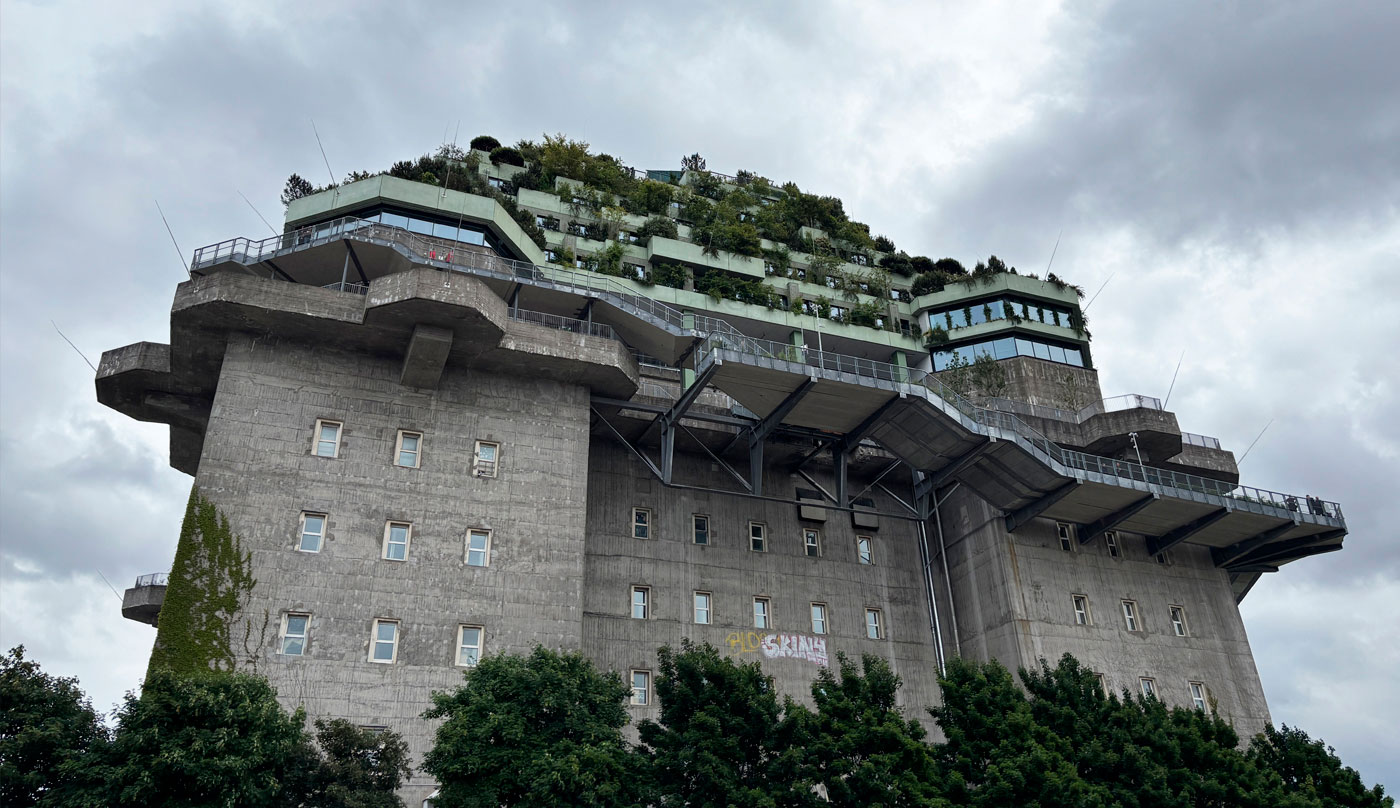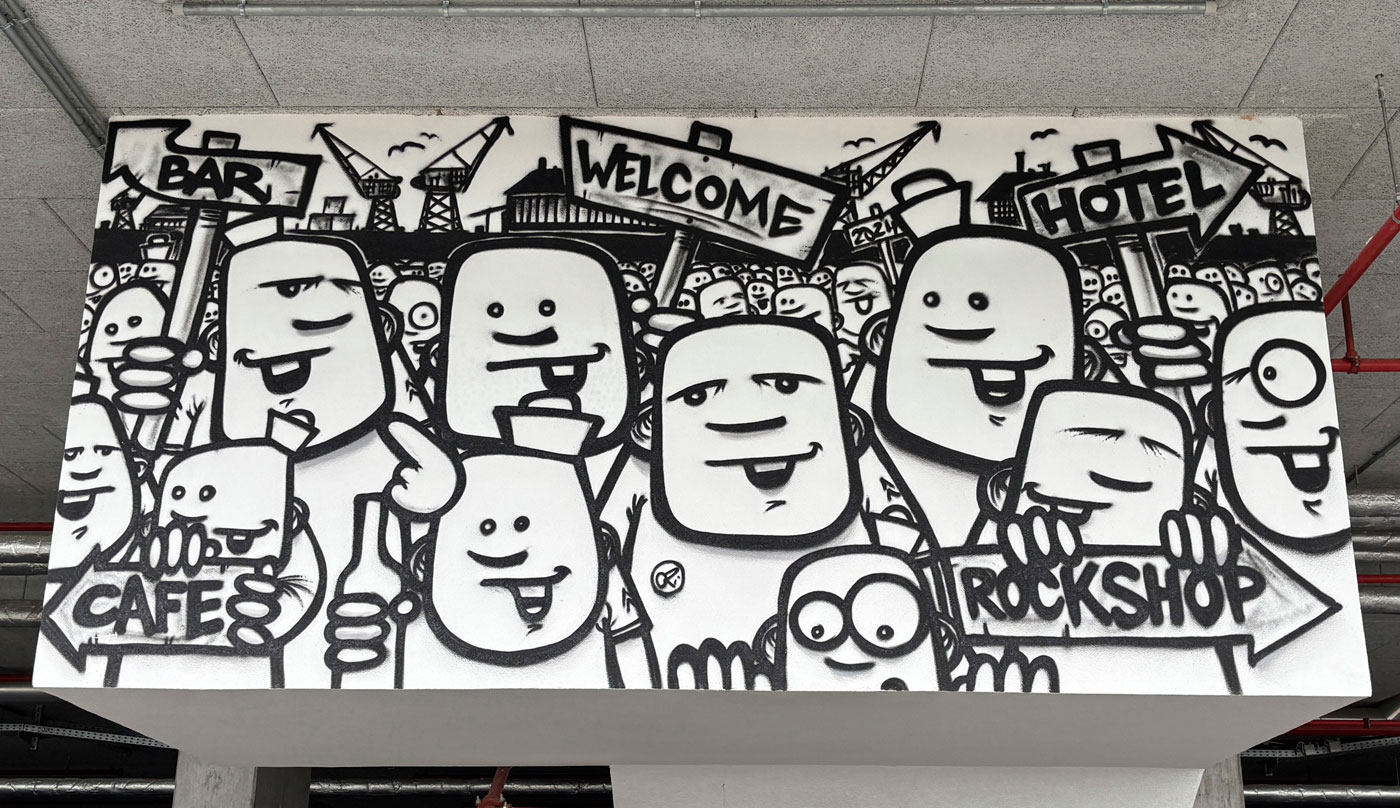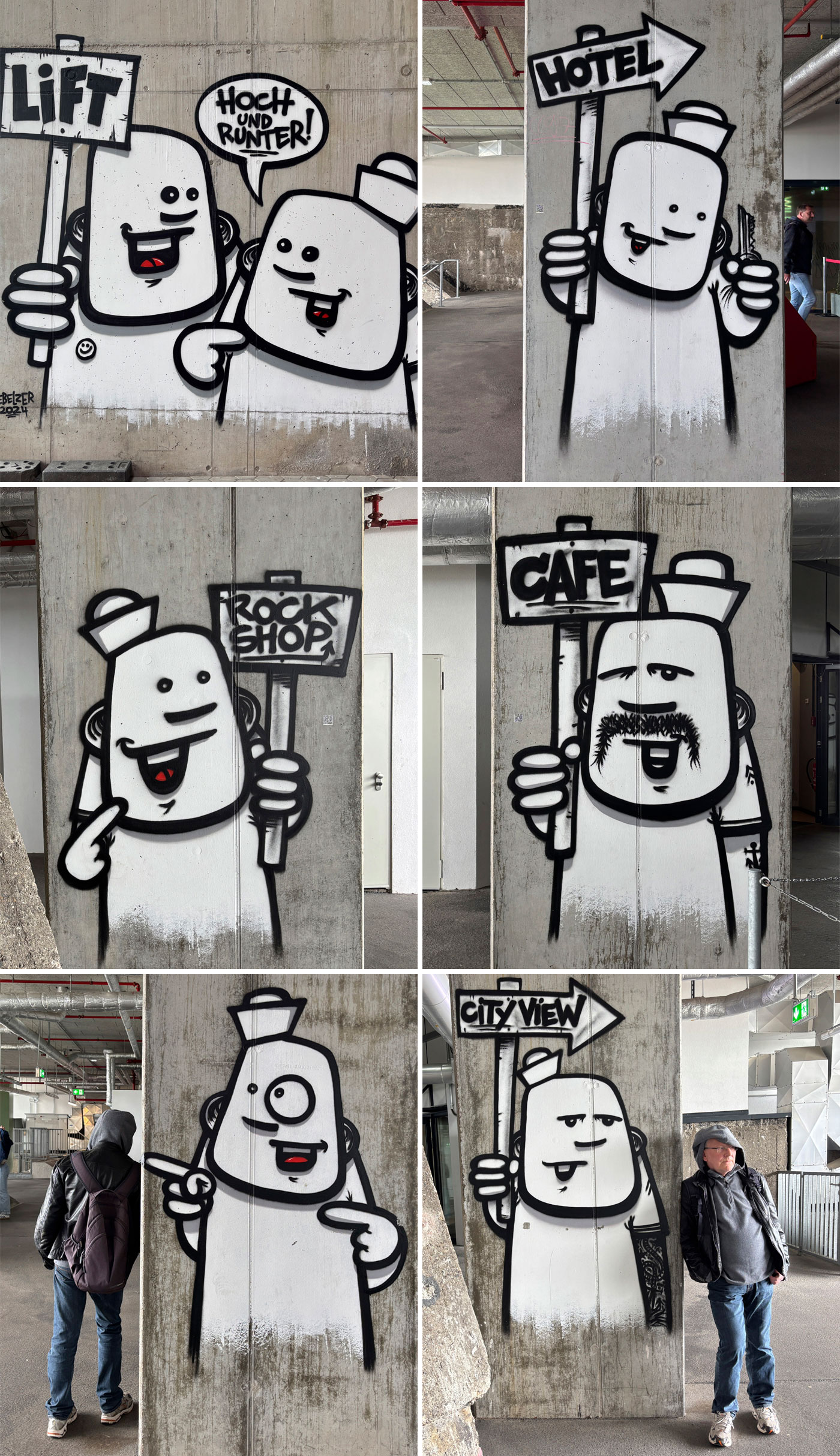
Imagine a signage system that needs no fabrication. No long lead times. No material specifications. No mounting system. And it’s easy for just one person to install.
Turns out all you need is some paint and a really good graffiti artist.
This revelation came in Hamburg, Germany, while I was visiting a repurposed World War II “flak tower.” One of the largest ever built, the St. Pauli Bunker was constructed in 1942 by forced laborers under the Nazi regime. Essentially a 25-story building with walls over 11 feet thick, the fortress served as an anti-aircraft defense post and public shelter during air raids by Allied Forces.

After the war, the colossal structure remained. Partly because a grand repurposing was part of its original design (hence the counterintuitive windows, which were sealed in wartime), and partly because demolishing it would’ve flattened surrounding neighborhoods, too. So the bunker was given new life. New lives, to be exact.
Over the decades it housed residential and event spaces, restaurants, and media organizations. Gyms for rock climbing and UFC training were added more recently, along with a nightclub that is a staple of the local scene. And in 2024, the bunker’s most transformative project opened on top – a 5-story hotel with a green facade and sprawling rooftop garden framed by unreal city views (REVERB’s first guest was Karl-Heinz Pischke, who took shelter in the bunker as a 12-year-old while bombs dropped on Hamburg in 1945).
It’s a lot to take in, but I was equally drawn to the beauty underneath. The ingenious graffiti signage in the bunker’s original portions, where visitors can learn about its history.


